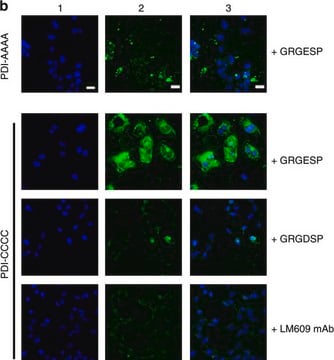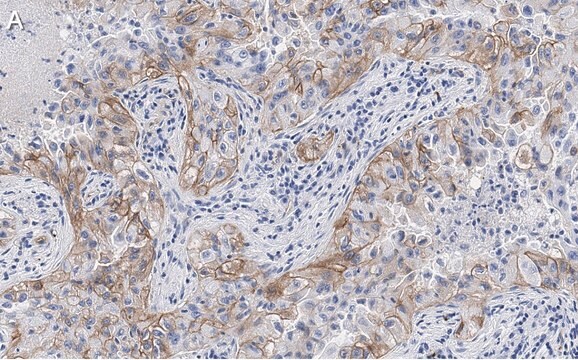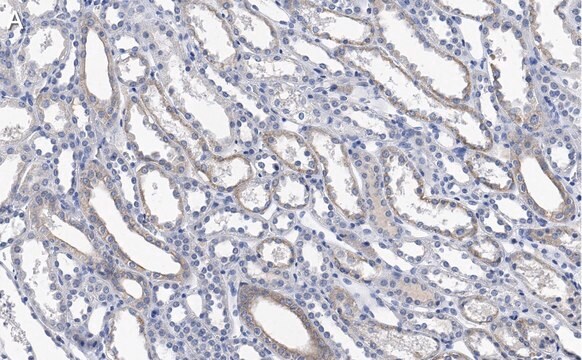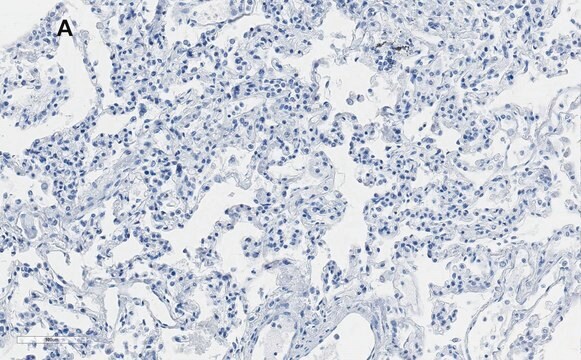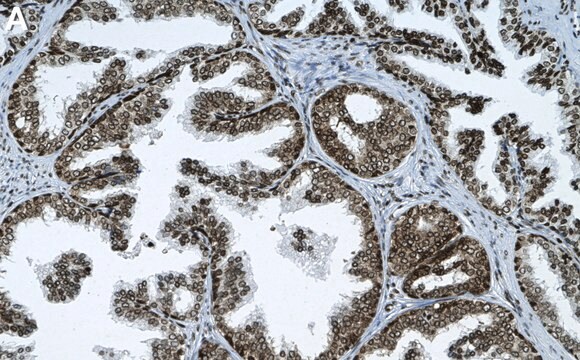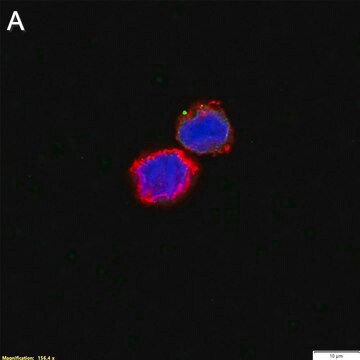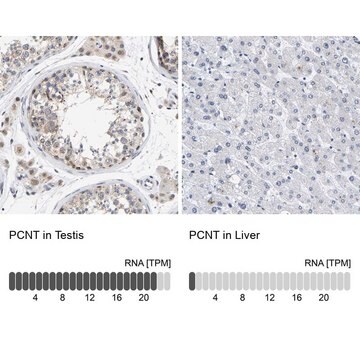MAB1876-Z
Anti-Integrin αVβ6 Antibody
mouse monoclonal, 27.1 (VNR-1)
Synonim(y):
Integryna alfa-V, integryna αVβ3, podjednostka alfa receptora witronektyny, CD51, łańcuch ciężki integryny alfa-V, łańcuch lekki integryny alfa-V, integryna beta-3, glikoproteina błonowa płytek krwi IIIa, GPIIIa, CD61
About This Item
Polecane produkty
Nazwa produktu
Anti-Integrin αVβ3 Antibody, clone 27.1 (VNR-1) (Azide Free), clone 27.1 (VNR-1), from mouse
pochodzenie biologiczne
mouse
Poziom jakości
forma przeciwciała
purified antibody
rodzaj przeciwciała
primary antibodies
klon
27.1 (VNR-1), monoclonal
reaktywność gatunkowa
human, rat
metody
flow cytometry: suitable
immunohistochemistry: suitable (paraffin)
izotyp
IgGκ
numer dostępu NCBI
Warunki transportu
dry ice
docelowa modyfikacja potranslacyjna
unmodified
informacje o genach
human ... ITGAV(3685) , ITGB3(3690)
Powiązane kategorie
Opis ogólny
Specyficzność
Immunogen
Zastosowanie
Flow Cytometry Analysis: A representative lot detected the surface expression of vitronection receptor (VnR) complex on CHO cells co-transfected with αv and either wild-type β3 or the Cam variant of Glanzmann′s thrombasthenia with the Asp119Tyr mutation (β3cam) (Loftus, J.C., et al. (1990). Science. 249(4971):915-918).
Affects Function: A representative lot blocked M21 human melanoma cells from adhering to fibrinogen (Fg), von Willebrand Factor (VWF), or fibronectin (FN) coated surface in a Integrin αvβ3-dependent manner (Pilch, J., et al. (2002). J. Biol. Chem. 277(24): 21930-21938).
Affects Function: A representative lot blocked metastatic human breast cancer cells from adhering to collagen I matrix (Felding-Habermann, B., et al. (2001). Proc. Natl. Acad. Sci. U. S. A. 98(4):1853-1858).
Cell Structure
Adhesion (CAMs)
Jakość
Immunohistochemistry Analysis: A 1:50 dilution of this antibody detected Integrin αVβ3 in rat cerebral cortex tissue.
Opis wartości docelowych
Postać fizyczna
Przechowywanie i stabilność
Handling Recommendations: Upon receipt and prior to removing the cap, centrifuge the vial and gently mix the solution. Aliquot into microcentrifuge tubes and store at -20°C. Avoid repeated freeze/thaw cycles, which may damage IgG and affect product performance.
Inne uwagi
Oświadczenie o zrzeczeniu się odpowiedzialności
Nie możesz znaleźć właściwego produktu?
Wypróbuj nasz Narzędzie selektora produktów.
polecane
Kod klasy składowania
12 - Non Combustible Liquids
Klasa zagrożenia wodnego (WGK)
WGK 1
Temperatura zapłonu (°F)
Not applicable
Temperatura zapłonu (°C)
Not applicable
Certyfikaty analizy (CoA)
Poszukaj Certyfikaty analizy (CoA), wpisując numer partii/serii produktów. Numery serii i partii można znaleźć na etykiecie produktu po słowach „seria” lub „partia”.
Masz już ten produkt?
Dokumenty związane z niedawno zakupionymi produktami zostały zamieszczone w Bibliotece dokumentów.
Nasz zespół naukowców ma doświadczenie we wszystkich obszarach badań, w tym w naukach przyrodniczych, materiałoznawstwie, syntezie chemicznej, chromatografii, analityce i wielu innych dziedzinach.
Skontaktuj się z zespołem ds. pomocy technicznej
